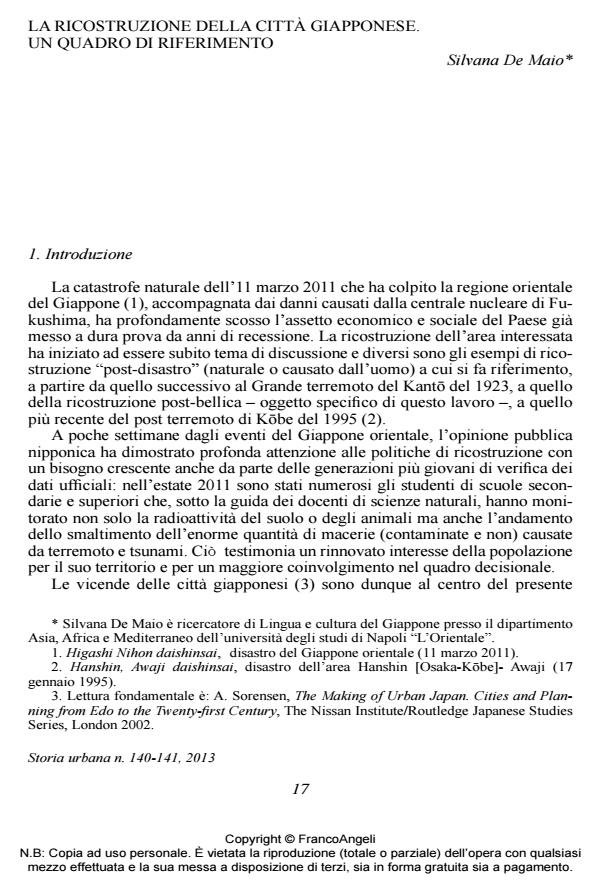The Reconstruction of Japanese Cities. An Outline
Journal title STORIA URBANA
Author/s Silvana De Maio
Publishing Year 2014 Issue 2013/140-141
Language Italian Pages 32 P. 17-48 File size 5784 KB
DOI 10.3280/SU2013-140002
DOI is like a bar code for intellectual property: to have more infomation
click here
Below, you can see the article first page
If you want to buy this article in PDF format, you can do it, following the instructions to buy download credits

FrancoAngeli is member of Publishers International Linking Association, Inc (PILA), a not-for-profit association which run the CrossRef service enabling links to and from online scholarly content.
The current analysis highlights the urban structure of Japanese cities beginning from the end of Edo period (1603-1868) to the immediate postwar years. It deals with about one hundred years spanning through Meiji period (1868-1912) during which Japanese statesmen wanted to show to the Great Powers of the world the progress undertaken in few years for the modernization of the country. In this context, the urban development of the treaty ports or the reconstruction of districts of Tokyo (Ginza brick town) destroyed by fi re, were important attempt of plan and construction on Western style model realized under the direction of the foreign employees of Meiji Government (oyatoi gaikokujin). They had a key role also in setting out the works for the imperial capital (Teito). However the urban structure of Tokyo developed quickly after the Great Kanto Earthquake of 1923 and the terrible fi re which spread after it pointing out also that brick constructions of Meiji period were not suitable in such a seismic area. It was after World War II that reconstruction started all over the country. As soon as 1945 there were thirty cities with a population of more than one hundred thousand citizens. Ishikawa Hideaki (1893-1955) prepared a very ambitious project for Tokyo reconstruction but unfortunately it was never realized. Great attention was paid to make the city as one which would not burn easily (Toshi funenka undō) after the fi rebombing of the United States Army Air Forces almost completely destroyed it
Keywords: Edo capitale imperiale (Teito) città delle colonie giapponesi Gotō Shinpei (1857-1929) Ishikawa Hideaki (1893-1955).
- La storiografia italiana sull'Asia orientale: tendenze e questioni Noemi Lanna, Guido Samarani, in SOCIETÀ E STORIA 187/2025 pp.183
DOI: 10.3280/SS2025-187010
Silvana De Maio, La ricostruzione della città giapponese. Un quadro di riferimento in "STORIA URBANA " 140-141/2013, pp 17-48, DOI: 10.3280/SU2013-140002